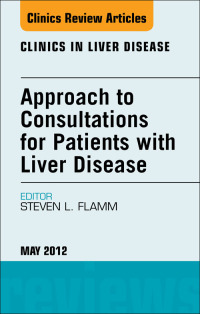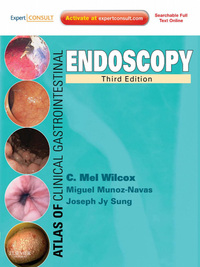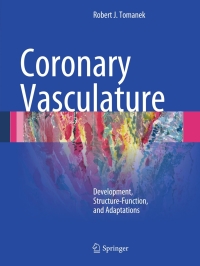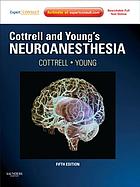Praise for this book:This book should be required reading for the multidisciplinary team of physicians and health care professionals who use mammography for breast cancer detection and treatment…a landmark volume in the field of mammography.–Radiology
Internationally renowned breast cancer imagers, Laszlo Tabar and Peter B. Dean, and the eminent breast pathologist, Tibor Tot, distill decades of clinical expertise in this new volume covering the most frequently occurring malignant type of calcifications: the pleomorphic, crushed stone-like calcifications.
The book presents a systematic approach to using mammographic features to distinguish different subtypes of breast diseases originating within the terminal ductal lobular unit (TDLU). More than 800 images demonstrate abnormal findings with superb clarity, providing a state-of-the-art visual reference for interpreting mammograms in the clinical setting.
Features:
- Concise descriptions of mammographic and MRI findings correlated with high-quality histopathologic images to provide a reliable guide for accurate diagnosis and differential diagnosis, as well as prognostic classification
- Extensive coverage of all aspects of the benign differential diagnostic counterparts of pleomorphic calcifications, including fibrocystic change, fibroadenoma, and papilloma
- Straightforward discussion of terminology based on a thorough analysis of subgross anatomy, 3D histologic features, and long-term disease outcomes
- 3D viewing glasses enclosed in the book for perceiving specially marked images in their true three-dimensional form
This book is ideal for all breast imagers and breast pathologists, as well as for surgeons and oncologists specializing in breast diseases. For the radiologist, this book is an indispensable reference for harnessing the power of mammography to detect breast cancer at the earliest stages possible.
Editorial Reviews
Review
This book should be required reading…[It] is exceptional in the way it summarizes the interpretation of the mammographic finding of crushed stone-like calcifications through radiologic-pathologic correlations…should become a landmark volumein the field of mammography. — RadiologyWritten by [an] internationally renowned group of breast imagers and breast pathologist[s]…this book should be required reading for the multidisciplinary team of physicians and health care professionals who use mammography for breast cancer detection and treatment…This textbook is exceptional in the way it summarizes the interpretation of the mammographic finding of crushed stone-line calcifications through radiologic-pathologic correlations…a landmark volume in the field of mammography.–RadiologyA comprehensive guide for analyzing the most common malignat type calcifications on the mammogram. Internationally renowned breast cancer imagers…distill decades of clinical expertise in this new volume…Systematic…A state-of-the-art visual reference for interpreting mammograms in the clinical setting. Concise descriptions of mammographic and MRI findings correlated with high-quality histopathologic images…provide a reliable guide for accurate diagnosis and differential diagnosis, as well as prognostic classification…Extensive coverage of all aspects of the benign differential diagnostic counterparts of pleomorphic calcifications…Straightforwrd discussion of terminology based on a thorough analysis of subgross anatomy, 3D histologic features, and long-term disease outcomes. This book is ideal for all breast imagers and breast pathologissts, as well as for surgeons and oncologists specializing in breast cancer. For the radiologist, this book is an indispensable references for harnessing the power of mammography to detect breast cancer at the earliest stages possible.– Datenbank ETDE Energy Database
From the Back Cover
Praise for this book:This book should be required reading for the multidisciplinary team of physicians and health care professionals who use mammography for breast cancer detection and treatment…a landmark volume in the field of mammography.–Radiology
Internationally renowned breast cancer imagers, Laszlo Tabar and Peter B. Dean, and the eminent breast pathologist, Tibor Tot, distill decades of clinical expertise in this new volume covering the most frequently occurring malignant type of calcifications: the pleomorphic, crushed stone-like calcifications.
The book presents a systematic approach to using mammographic features to distinguish different subtypes of breast diseases originating within the terminal ductal lobular unit (TDLU). More than 800 images demonstrate abnormal findings with superb clarity, providing a state-of-the-art visual reference for interpreting mammograms in the clinical setting.
Features:
- Concise descriptions of mammographic and MRI findings correlated with high-quality histopathologic images to provide a reliable guide for accurate diagnosis and differential diagnosis, as well as prognostic classification Extensive coverage of all aspects of the benign differential diagnostic counterparts of pleomorphic calcifications, including fibrocystic change, fibroadenoma, and papilloma Straightforward discussion of terminology based on a thorough analysis of subgross anatomy, 3D histologic features, and long-term disease outcomes 3D viewing glasses enclosed in the book for perceiving specially marked images in their true three-dimensional form
This book is ideal for all breast imagers and breast pathologists, as well as for surgeons and oncologists specializing in breast diseases. For the radiologist, this book is an indispensable reference for harnessing the power of mammography to detect breast cancer at the earliest stages possible.
Product Details
- Series: Breast Cancer – Early Detection with Mammography
- Hardcover: 320 pages
- Publisher: Thieme; 1st edition edition (March 12, 2008)
- Language: English
- ISBN-10: 3131485310
- ISBN-13: 978-3131485311
- ISBN-13: 9783131485311
- eText ISBN: 9783131493514










Reviews
There are no reviews yet.